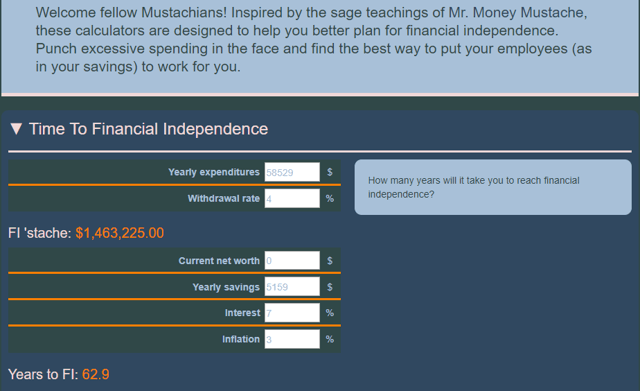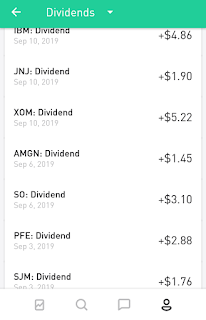Meanwhile, my true passion of NBA basketball, and more specifically, Bucks basketball is back! Despite the new faces of Kyle Korver, Robin Lopez, Thanasis Antetokounmpo, and Wesley Matthews, the Bucks appear to have retained much of that same chemistry from last season as evidenced by their win over the Rockets to open the season in Houston. It may only be one game, but given the outcome of last season and the lessons from it, I'm brimming with optimism that this will be the year that the Bucks win it all!
But that's enough of the football and basketball talk for now. We'll be discussing the dividend/distribution increases I received during the month of October and looking ahead to dividend increases that I'm expecting for November.

Distribution Increase: Enterprise Products Partners (EPD)
EPD extended its streak of consecutive quarterly distribution increases to 61, having raised its quarterly distribution from $0.44/unit to $0.4425/unit a couple weeks ago. It's this level of consistency from EPD that prompted me to write another bullish article on the company on Seeking Alpha recently, and this consistency is also why EPD is the largest energy position in my portfolio in terms of portfolio weighting.
Across my 19 units of EPD, this increased my forward annual dividends/distributions by $0.19.
Distribution Freeze: EQM Midstream Partners (EQM)
Readers will notice EQM actually opted to keep its quarterly distribution steady at $1.16/unit rather than continuing upon its recent trend of raising the quarterly distribution by $0.015.
While this isn't quite what I was expecting to occur, I can understand in hindsight why EQM opted to freeze its dividend for the time being.
EQM recently announced that its key Mountain Valley Pipeline project is expected to experience yet another delay and increase in costs. The project's completion date was pushed back from mid-2020 to late-2020 while expected costs rose from $4.8-5.0 billion to $5.3-5.5 billion.
Meanwhile, EQM's distribution is hanging on by a few threads at a coverage ratio of 1.03. For context, Simply Safe Dividends considers a coverage ratio of 1.10 or greater to be ideal for MLPs such as EQM. Assuming the eventual completion of MVP (which accounts for about 2/3 of EQM's organic growth going forward), EQM's distribution coverage would increase to help the company meet its long-term coverage ratio goal of 1.20.
Fortunately, I believe that because MVP is about 90% complete, the sunk cost of the pipeline to date will be a motivating factor for management to complete this project in the next year to year and a half.
Admittedly, this is more of a speculative position within my portfolio and it's arguably the least safe dividend/distribution in my portfolio. I have weighted it as such in my portfolio, with it accounting for barely 2% of my dividend/distribution income and less than 1% of my portfolio value. It certainly isn't on the level of EPD or Energy Transfer (ET), but I still believe it's a good midstream company.
Not Yet Announced Dividend Increase: Iron Mountain (IRM)
While IRM has announced its dividend about a week before the end of October the last couple years, the company has apparently decided to depart from this trend to establish a new one as it has yet to announce a dividend increase as I'm writing this on October 26.
I don't really have any doubts that IRM will fail to deliver a dividend increase in the realm of what I was expecting in my previous dividend increase post, but it's just a matter of waiting until the week that this blog post is published before I'm able to update this section of the post when the company will presumably announce its dividend increase.
Until that time, I'm assuming that IRM will increase its quarterly dividend from $0.611/share to $0.638/share. Should IRM follow through on my prediction, this would increase my annual forward dividends by $0.432.
Bonus Distribution Increase: Magellan Midstream Partners (MMP)
I somehow forgot all about the fact that MMP increases is distribution at near the end of the first month of each quarter. MMP increased its quarterly distribution 0.7% from $1.0125/unit to $1.02/unit. Across my 3 shares, this increased my annual forward distributions by $0.09.
With consistent raises each and every quarter, I wonder how much longer I'll forget about MMP.
Expected Dividend Increases for November
Hormel Foods Corporation (HRL):
HRL is one of only two dividend increases that I'm expecting within my 65 stock portfolio (including 23 M1 Finance holdings that each account for less than 0.1% of my net worth and dividends) for the month of November.
With that said, I believe HRL is in a great position to reward its shareholders with a 9.5% increase in its quarterly dividend from $0.21/share to $0.23/share.
When we consider that HRL is paying out a bit less than half of its earnings, possesses a nearly flawless balance sheet, and is likely to grow its earnings in the mid to high-single digits over the long-term, I believe the above dividend growth estimate is reasonable.
This will have no impact on my dividend income (a bit less than $0.005) because HRL is less than even 0.1% of my total dividend income.
The reason that this will actually have no impact on my dividend income is that M1 Finance rounds to the nearest cent for quarterly dividends/distributions and I'm already getting the benefit of rounding in this case.
Starbucks (SBUX):
SBUX is the second of two dividend increases that I'm expecting for the month.
Similar to HRL, SBUX accounts for less than 0.1% of my total dividend income and the impact that this raise will have on total dividend/distribution income will be nothing.
However, I do expect a very strong dividend increase from SBUX in the low to mid-teen percent range given the company's fairly strong balance sheet and projected earnings growth.
Concluding Thoughts:
As of the last few days of October, this month has brought a little bit of everything between EPD delivering as expected, EQM freezing its distribution (as I should have expected in hindsight), and IRM seemingly trolling shareholders by going back to a late October or early November dividend announcement.
Thus far, my annual forward dividends/distributions have increased by $0.28 while I await the increase from IRM. It will be interesting to see whether the company increases its dividend on or before Halloween or if it will increase its dividend on Friday, November 1. The $0.28 in increases for the month thus far would require a $7.00 investment at a 4% yield to duplicate.
After many consecutive months of receiving at least a few dividend/distribution increases, we've reached my slowest month of the year for dividend/distribution increases, with none of my 42 whole share holdings expected to increase their dividends/distributions this month.
There are plenty of companies that are expected to increase their dividends this month aside from HRL and SBUX, such as Nike (NKE), Walt Disney (DIS), and McCormick, which I recently covered on Seeking Alpha (MKC).
Unfortunately, I don't yet own them.
However, I do believe the slowdown for November will motivate me to take action between now and next October, so that I can benefit from some of these increases next November.
The upside is that December is primed to be my strongest or second strongest month of the year for dividend/distribution increases in terms of quantity and its overall boost to income.
Discussion:
Are you as optimistic toward your favorite NFL team and NBA team as I am? Will November be a slow month for you in terms of dividend/distribution increases?
As always, thanks for reading this post. I look forward to reading any comments that you leave below.








